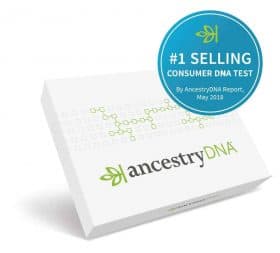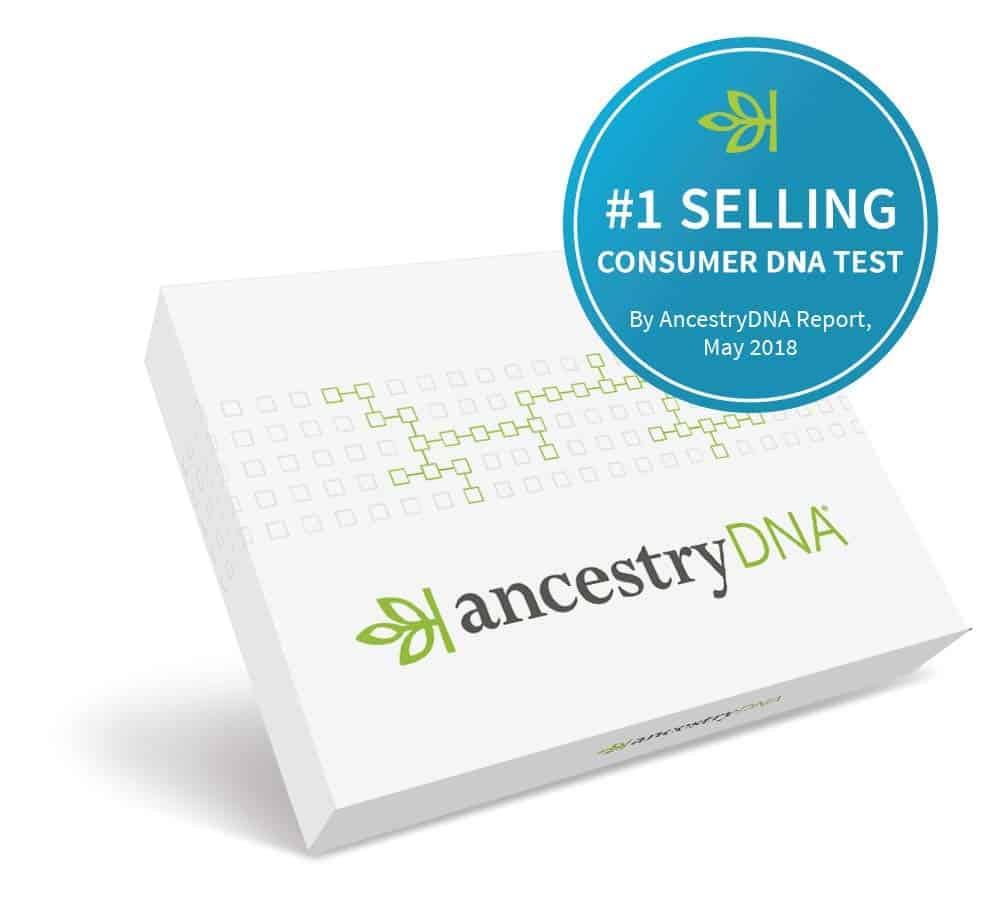
The Best DNA and Ancestry Products Compared
AncestryDNA Guide
Our team of family history specialists spent hours tracking down the best home DNA test kits. They found that the Ancestry DNA test is reliable and easy to use.
Advertising Disclosure
Many or all of the companies featured provide compensation to us. These commissions are how we maintain our free service for consumers. Compensation, along with hours of in-depth research, determines where & how companies appear on our site.
PROS
- Results of this DNA kit show a breakdown of each ethnicity found in your sample
- Easy to use
- Provides most users with results in eight weeks or less
CONS
- When you pay to take this test, you give the site full use of your DNA sample
- Results are not as accurate as some wanted
BOTTOM LINE
Ancestry.com offers a number of resources for those looking into their family histories, including this DNA testing kit that you can use at home. The results can show family members you never knew you had and tell you more about your family line.
Millions of people around the world use Ancestry.com on a regular basis when doing genealogy research. The site charges a membership fee but gives members access to millions of pages of documents. You can use census records to see where your family lived every 10 years and view military records to see where and how long they served. The site also has its own forum that lets you post about your family and get help from long-lost relatives and others who are familiar with your last name. But since 2012, the site offers an Ancestry DNA Home Test Kit.
The Ancestry test is easy to use and something that you can literally do in 30 seconds. You can get your sample ready before you brush your teeth or grab breakfast and set it out for the postal worker on your way out the door.
FEATURED GENETICS EXPERT
The results will arrive via email in around eight weeks and will show you what ethnicity you are and where you came from based on your genetic markers.
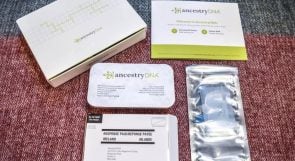
Who's This for?
Have your grandparents told you family stories for years that they heard during their own childhoods? You might hear all about how your family came over on the Mayflower and were early settlers or how your family had a connection to a rich and powerful family but had a following out and divided the family lines.
Some families even claim that they have Native American royal blood coursing through their bodies. A home DNA kit of this type can help you finally find out the truth about your family and put an end to all those legends that traveled down over the years.
Those searching for an Ancestry DNA Test Review include the following:
- Anyone who is adopted and wants to find out where they came from
- Those who want to find out the truth behind family stories
- Anyone who wants to see what ethnicity they are
This simple DNA test requires a saliva sample that you produce early in the morning or when you first wake up. It will look at the genetic markers found in your sample to determine your ethnicity down to a small percentage. Though you may think that you’re mainly European, you may find that you’re also African or Asian too.

How Does the DNA Test Work?
This is an important step because it suspends your sample and keeps it safe during transport. You will also need to go online and set up an account with the Ancestry website that has the number on your test attached to your account.
When your results come back, the site will email you and let you view that information online. It takes between six and eight weeks for Ancestry to process your results.
If you searched for an Ancestry DNA Test Review, you likely wanted to know how this test worked and how long it would take to get back your results. The test itself is easy to take and should only take you a 30 seconds. You’ll want to open the packaging and remove the tube for your saliva sample and the canister of liquid inside.
The tube for your saliva has a lid that twists off. When you gather enough saliva in your mouth, you will carefully and gently spit into this tube until you fill it to the line on the side.
You can then add the liquid from the second canister and screw on the top of the tube. Shaking the tube is the only other thing that you need to do.
What Not to Do Before Supplying Our Sample

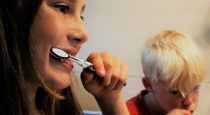


How Much Does the Test Cost?
The basic cost of this test is around $99. This is the price that you’ll pay when you buy the test kit directly from the Ancestry website and when you buy it from Amazon and other sites. While this price might seem high, it’s comparable to other test kits.
When you compare the 23andMe vs. AncestryDNA testing kits, you’ll see that both cost around the same. This cost includes delivery and shipping too. Delivery refers to how much it costs to ship the test to you, while return shipping refers to how much it costs to send the kit back.
Other companies that offer home test kits charge an extra fee for shipping and higher costs. One example is the National Geographic kit, which costs nearly $200. National Geographic also asks that you pay out of your own pocket to send back your sample.
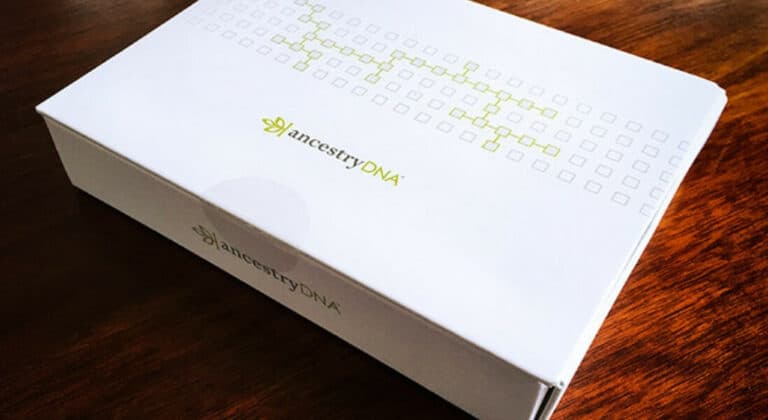
You’ll also find the Ancestry kit available in some pharmacies and drugstores, though those shops may charge a slightly higher price.
Those kits also require that you pay to send back your sample too. The best way to get this kit at a good price is by purchasing directly through the Ancestry website.
What Can You Learn from the Test?
The biggest question you probably have is about what this test can actually tell you. This test essentially looks at your genes and chromosomes to see what markers you have. It can identify more than 700,000 markers in a basic saliva sample.
The test looks at how those markers compare to those found in other samples to determine where your family started. Each marker in your sample that matches to another sample can help the test track down any other parts of the world where your family once lived and how they moved over the years.
While other tests break the world down into hundreds of smaller regions, this test separates the world into just 26 regions. Instead of showing you that you’re 2.6% Polish and 3% Russian, it will show you that you’re 5.6% Eastern European. Some of the other regions that it shows include Western European and Asian. One thing to keep in mind is that the test does not work well with anyone who is primarily Native American.
Regions That Uses Ancestry

- Highest Accuracy
- Lowest Accuracy
- Lowest Accuracy
Most home tests do not look for these markers. If you want to find out which tribe your family once belonged to, you may want to look for a test designed specifically for Native Americans.
Raw Data and Other Features
Many Ancestry DNA Test Reviews point out that the results are available in an easy to use and view format. The site actually breaks down your ethnicity into a pie chart. This chart shows you all the genetic markers that you have connected to a specific ethnicity and the exact percentage that you have of each one. You can also see whether you have any potential matches with other users based on your genes. All the raw data that the test finds is yours to take with you. Even if you decide that you no longer want to be a member, you can still download that data and use it without being a member.
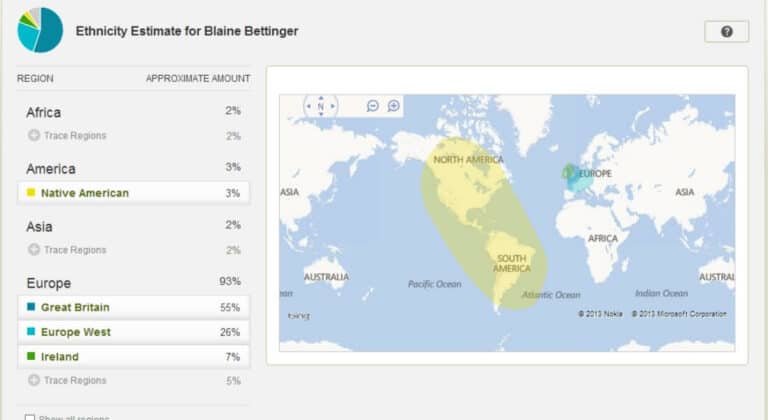
Some users like that Ancestry allows them to view how the site determines their matches and what it does with their information. It’s important that you read the fine print on the test kit before you submit your sample. Once Ancestry receives your sample, you should read their privacy policy to understand exactly what they can do with that kit. Fortunately, the site includes a number of short videos that you can watch too. Those videos help you understand what Ancestry does with its samples and the information it finds and how it calculates the raw data that you see.
Another nice feature of this test is the map that it gives you. This map shows you the total number of ancestors you had living in different parts of the world at any given time. You can actually scroll through the years and centuries to view how your family moved. This can give you an idea of when they immigrated to the United States and whether you still have distant relatives living in other countries. The site typically focuses more on the European regions though and may not offer as much information about groups living in other parts of the world.
Make Connections Online
Any good AncestryDNA Test Review will talk about the ways in which you can make connections online via your genetic results. No matter how close your family is, there are probably a few branches on your family tree that you cannot fill out. You probably know your aunts and uncles and their children, but once you go back a few branches, it’s often hard to find people you know. This test can help you track down any relatives you have who also submitted their own samples. It gives you an easy way to find long lost family members and those you never met before.
With more than 10 million registered users and members on the site, it’s highly unlikely that you won’t encounter any genetic matches. Ancestry has its own Cousin Matches database that it searches for after receiving your sample. It shows you any matches that it found and how confident it is that the person matches you. You can view whether that person is a possible second or third cousin and view people even more distantly related to you. If you worry about sharing your information online, keep in mind that the site limits what you can share upfront.
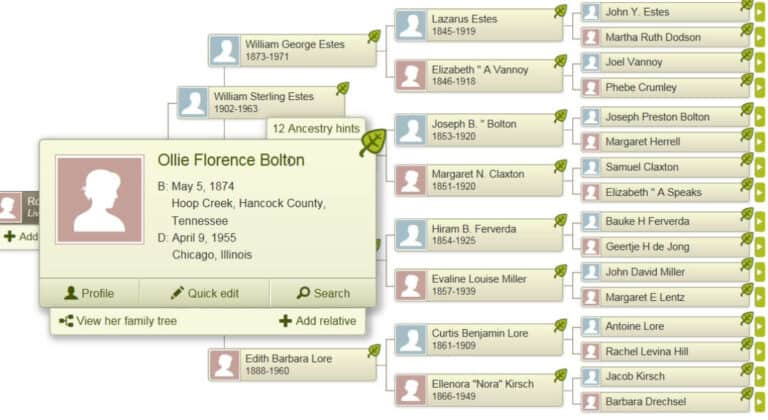
When you pop up as a potential match, the site will simply show how you match, your ethnicity and the username that you selected. You also have the option of adding your own photo or image. If you want to reach out to a potential match, you can send a short message to that user. The user then has the option of writing back. Ancestry also lets others contact you and gives you the chance to write back or ignore that message. You might get thousands of matches and not see a single person that you ever met in real life.
As an Ancestry member, you can also create your own family tree. This tree can include as much or as little information as you want to share. You should add your name and the names of your parents, grandparents and both their and your own siblings though. When you make your family tree public, matches can view your information and see how you are related before they contact you. If the site recommends a match to you who has a public family tree, you can view that information yourself. This makes it easier to see how you and that individual are connected before you send him or her a message.
Other Online Features
You should really make use of everything that Ancestry has to offer when doing your genealogy research. New members can sign up for a monthly account and use the genealogy service (no access to the DNA kit) for 14 full days before deciding whether to stick with it. You get a free trial when you link a credit or debit card to the site too. The best way to save money is with an annual membership. Ancestry will contact you before your membership expires and let you know if it will charge your card for another year. As a full member, you can create a family tree and find connections on other trees.

One feature that is open to full members is the DNA Circles feature. When you create a family tree, you need to go back at least three generations and share as much information as you can find. It’s helpful to include full names whenever possible and to list both birth and death dates as well as where those individuals lived. The site will look at other family trees posted by members and identify those that list the same ancestors as your tree does. Your DNA Circle will slowly grow as the site makes connections across multiple trees.
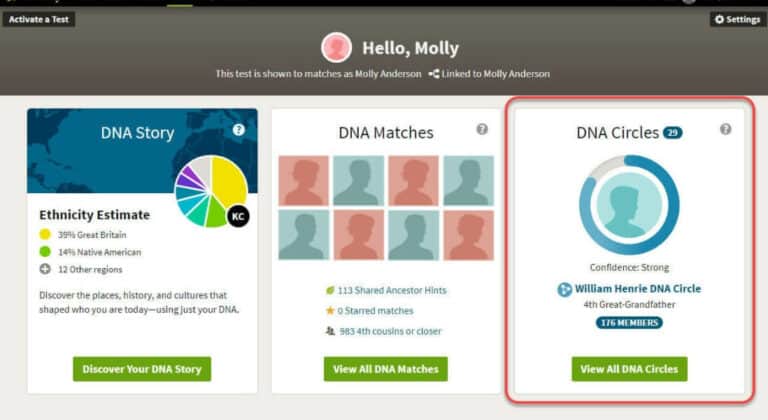
Ancestry added a feature called Genetic Communities in 2017, which can be quite helpful too. This is an entirely optional feature that you can decline if you think it won’t help you with your research. The site will view your ancestry and use your genetic markers to find communities that you belong to based on your shared genes. You can click on any of the decades or time periods listed to see what life was like for your ancestors based on where they lived and that point in time. This is a great way to see what your family went through over the years.
Are the Results Accurate?
Negative Ancestry DNA Test Reviews often come from users who complained that their results were not accurate. Those users often believe family legends and rumors rather than scientific proof. A common issue surrounds those who believe they are Native American. It’s important that you look at the results of your test in comparison to your family stories to see if you can explain some of the discrepancies that you see.
The Ancestry DNA test is quite accurate and can give you exact genetic markers down to one-tenth of a percentage. You might find out that you are 6.2% one ethnicity and 2.3% of another ethnicity. The results typically show you the highest matches that it found at the top with the lowest matches at the bottom. This can give you an idea of where your family started and where they moved over the coming years before they settled in the United States. As more people submit their own samples, the accuracy of this test will only grow.

What if You're Native American?
As we already stated, this isn’t the best test for those who are Native American. Your results can show you whether you had ancestors who lived in North America and South America over the years. It can even tell you when they lived there, which comes in handy when deciding whether you have any Native blood. The downside is that it can not tell you the exact tribe you belonged to or show definitive proof that your family came from one tribe. This is because those tribes are very closely related in terms of genetic markers.
To track your Native American heritage, you typically need to use birth records. Those records can help you establish which of your family members are Native American and what percentage of each tribe they were. You may find that you had relatives who belonged to two different tribes because their parents were from different tribes and married and had children. You’ll also need to find proof that your family members lived in the areas where those tribes lived. Some DNA home test kits will track your mother’s side or your father’s side and help you identify any markers you have for a specific tribe in North America.

What are Tribal Benefits?
Certain tribes offer benefits to those who can prove they are members of those tribes. Those benefits can give you a percentage of the profits from a tribe casino or funds that you can use for college.
Ancestry Protects Your Privacy
When you receive your testing kit, you’ll notice a code listed inside the packaging. This is the code that you enter on the site when setting up your account. Though you might worry about other accessing your private information, Ancestry takes steps to keep that info safe. The testing center that processes your sample receives nothing but your sample and your unique code. Lab workers have no way of knowing who you are because they know you only by this code. Once it processes your sample, the lab sends it to Ancestry. The company will then put your results online and list it under your code.
You will receive an email that lets you know you can go online and view your results. Even before the results arrive, you have the option of blocking your information from others. Ancestry gives you the option of making your results public. If you want to share those results with others in your family, you can print out copies and give to them. You can also pick who you want to share that information with online based on the matches that the site has. Most users find that Ancestry offers more privacy options than other similar tests do.
Giving Test Kits as Gifts

Once you finish reading through our Ancestry DNA Test Review, you might decide that you want to take this test and that you want your parents and/or siblings to take it too. A big benefit of having other family members submit samples is that you can verify that your information is accurate based on the results that they get. Ancestry offers a bulk discount for those who want to order two or more kits. You can actually get those kits for less than it would cost to buy each one separately. The site often runs sales around Father’s Day, Christmas and other major holidays.
As the site ties the results to one specific account, you should keep any of the tests that you want to give as gifts sealed and in a safe spot. Ancestry tests do not have an expiration date. When you keep the kits sealed, your family members can open them later and register their own accounts with the site. This also allows them to submit their samples whenever they want and view their private results before deciding whether to share that information with you and anyone else.
Pros of the Ancestry Test
Though Ancestry claims that you will get your results in six to eight weeks, it took much less time for many users to get their results. The site will send an email to the address you added to your account when your sample arrives at the lab. This email will give you an approximate date of when your results will become available. Some users found that they got their results back just two weeks after getting this email. It can take longer during the busier seasons, which are usually around the holidays.
While there are other tests that you can use, Ancestry has the largest database of both samples and registered users. Some sites show that they have five million samples but do not tell you that less than half of those samples came from registered users. A registered user is someone who regularly logs into the site and uses it. With Ancestry, you can feel confident that the matches you get will come from people you can actually connect with later. The test examines your chromosomes and will identify users and members who match you.
With more than 10 million samples and nearly as many users, Ancestry offers the best DNA home test kit today. New users can create accounts to view their results and use those accounts to connect with their genetic matches. Not only can you list a username that keeps your full name private, but you can add a photo that lets others see if you look similar to them. That photo can result in more people sending you private messages when they learn that they matched you.
Though some features are only available for those who sign up for a membership, those features can come in handy when tracking and finding your family line. Anyone with an interest in genealogy should at least try out the site. You can use DNA Circles to expand your basic family tree and use the Genetic Communities feature to track your family over multiple points in time. Many like that the DNA Circles feature allows them to add new family members to their trees as new users sign up.
One of the biggest benefits of using this test is that it will keep a record of your results to find matches in the future. If you have second cousins and others distantly related to you who submit their own samples later, the site will notify you of those new matches as they become available. You then have the option of connecting with those individuals and adding them to your family tree. Ancestry is just one of the genealogy sites with a family tree option.
Another benefit of the Ancestry DNA test is that is it easy to use. It takes just 30 seconds or less to fill your sample tube with saliva and a few extra minutes to get it ready for shipping. Once your results come in, you can easily view your ethnic background and makeup to learn more about your family. The Ancestry site offers videos and live customer support for those who need help reading their results or using any of the features available to them.
EXPERT QUOTE
” AncestryDNA is also the classic test for discovering your genealogy, and they do a good job tying your Ancestry and family tree to your DNA. “

DR. ISABELLE NADEAU
Ph.D and Genealogy Expert
Cons of the Ancestry Test
No Ancestry DNA Test Review would be complete without a look at some of the possible cons of the kit. The biggest issue that many had was that the test did not provide them with the results that they expected. As Ancestry lists fewer regions than other tests do, you may not see results that relate to any smaller regions or smaller ethnic groups. There is also an issue with those who are primarily Native American and those who belong to a small group of people. The test may not show you anything that you didn’t already know.
Another issue is that the site provides members with more information than it does non-members. Unless you become a member, you’ll only see some basic information about your family line. Some of the features that we mentioned in this review are only available for members. You can get around that with a free trial though. When you create a new account, do not sign up for a membership plan. Once you get your results, you can sign up for a trial that lasts for one to two weeks and view all the results and information available to you. At the end of your trial, you can easily transfer your data to another site.
Should You Buy it?
It’s important that you read through our entire Ancestry DNA Test Review before deciding whether to buy it. We highly recommend this test for anyone who wants to trace their family lines and for those who have a hard time getting started in the field of genealogy research. Even if you have a rough idea of where your grandparents and their parents lived, you may not know how to trace your roots back even further. Once you find your ancestors who immigrated to the country, you might hit a dead end. It’s often hard to find information about people before they came to the United States, especially because many of them changed their names or birth dates.
Ancestry offers a DNA test kit that anyone can use. Even if no one else in your immediate family took the test, you can still find distant relatives, including those who live on the other side of the country and those who live overseas. The test can also help you find children that your relatives gave up for adoption over the years. Instead of just using names and dates, this test looks at the genetic markers that every person in the world has. It’s a must buy for anyone with an interest in family history.
What is the Competition Like?
With so many home DNA testing kits now available, you might wonder if the Ancestry one is right for you. We hope that our Ancestry DNA Test Review will provide you with everything you need to know about this test. Many of our readers will also find it helpful to see how this kit stacks up against the competition. There are many different kits that you can now use such as the one from National Geographic. This kit gives you results that are much more detailed but costs much more too. Most of the other kits we found don’t offer as many results.
Family Tree DNA
Family Tree DNA is a relatively new DNA testing company that has a website with its own forum that lets you connect with potential matches. It shows you any matches found within its database that fit with your sample and allows you to keep your information private or share it with the public. Family Tree DNA also offers multiple types of testing that lets you look for relatives based on your mother’s line or your father’s line. Ancestry only offers one type of testing, but it has a much larger database that can help you find more family members.
23 and Me
Another alternative to the Ancestry DNA test is the one offered by 23 and Me. This company originally offered genetic testing and health screening for users, but the FDA later prohibited the site from offering that type of information until more research was available. The 23 and Me kit still offers health screening options though that can tell you how your genes relate to your health. You can find out if you have the gene for hair loss or other conditions. Ancestry does not offer this feature, but it has a larger database than 23 and Me does.
MyHeritage DNA
Our MyHeritage DNA Test Review goes into greater detail about this test and some of its benefits. This company offers the same type of testing that Ancestry does and will show you some of the same results. As the company has fewer users though, you’ll have a harder time making matches and finding your lost relatives. One benefit that MyHeritage has over Ancestry is that it shows more regions around the world. You can use that information to see exactly where your family came from and how they moved over the years.
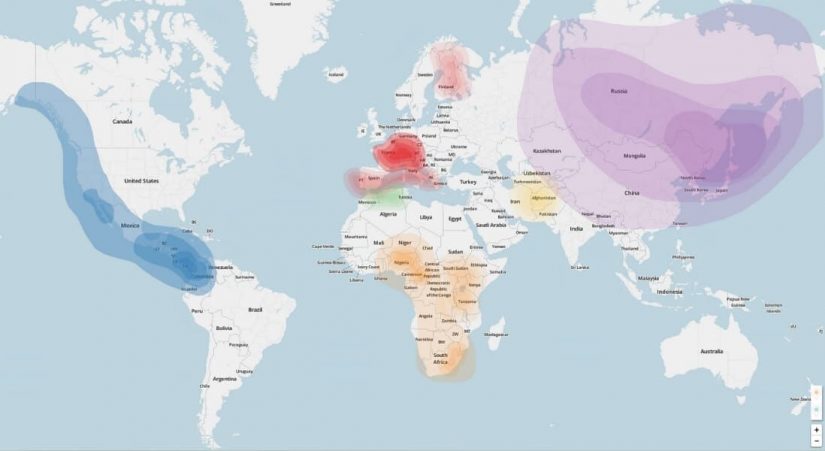
Final Verdict
There are dozens of DNA kits that let you provide a sample to a testing center and view your results online. MyHeritage is just one example of a competing test. The problem with some of the other tests that are out there is that they are just too new. Those tests rely solely on the members they already have and hope any new users will take a chance and submit their own samples. The fewer members the test has to pull from, the fewer results you’ll see. Ancestry is different because it has millions of registered users and millions of samples that it can pull from when processing yours.
This DNA test is definitely worth your money because it gives you so much information about your family and because it offers so many other options. Not only can you view your overall ethnicity and the percentage of each ethnicity that you are, but you can also find other users who share relatives on your family tree. The site does a good job of showing you matches based on genetic markers and with letting you contact other members who match you. With our Ancestry DNA Test Review, you’ll know that this test tells you almost everything you ever wanted to know about your family.
